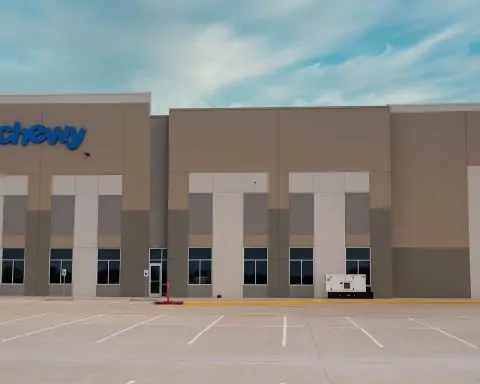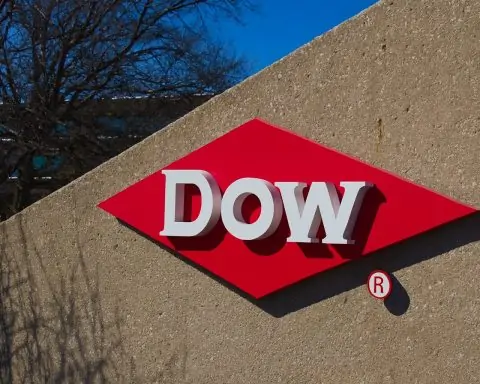- By mid-2023 FTTP availability was 38.4% of Greek households, with 0% rural fiber and over 60% of homes lacking fiber.
- By mid-2023 5G coverage reached 98.1% of the population, with about 59% of households having access to ultra-fast 5G mid-band (3.5 GHz) and just 6% of rural households covered by mid-band 5G.
- Starlink arrived in Greece in early 2022 and was fully available nationwide by March 2023, delivering typical speeds of 150–300 Mbps down and 20–40 Mbps up with latency about 30–50 ms.
- Starlink pricing fell from about €99/month to €60, then €40/month in late 2023, while hardware costs run roughly €300–€350 and an equipment rental option adds €50 setup + €15/month.
- COSMOTE (OTE) is the largest Greek ISP, accounting for about 48% of fixed lines, offering FTTH up to 1 Gbps and nationwide 5G coverage.
- DSL remains dominant, with 96% of households on ADSL, VDSL reaching around 50–100 Mbps, and FTTP availability at 38.4% of households as of mid-2023.
- Mobile networks are strong, with 4G ~99% population coverage and 5G ~98% by 2023, while Opensignal measured typical 4G/5G download speeds of 40–63 Mbps and a median mobile speed around 112 Mbps.
- The National Broadband Plan 2021–2027 aims for a gigabit society with 100 Mbps upgradeable to 1 Gbps nationwide by 2027, backed by SFBB vouchers (≈140,000 by Sep 2022) and the UFBB project targeting ~18% of the population.
- Island connectivity advanced with Vodafone’s €40 million investment building 670 km submarine and 800 km terrestrial fiber across Cyclades and Dodecanese, enabling up to 1 Gbps on islands, with new cables BlueMed and Quantum Cable planned.
- Public access and rural inclusion efforts include WiFi4EU hotspots and Citizen Service Centers, while rural Greece shows 9% of households with no fixed broadband and 0% fiber; 55% of rural homes have NGA like VDSL.
Overview: Greece’s Internet Landscape in 2025
Greece’s internet infrastructure is a mix of legacy DSL lines, emerging fiber-optic networks, expansive mobile broadband, and new satellite options. Nearly 85–87% of Greeks use the internet as of 2023 [1], and there are about 4.5 million fixed broadband subscriptions (~43% penetration per population) [2]. Household internet access stands around 86.9%, up dramatically over the past decade [3].
National coverage is high for basic broadband – around 97.3% of households can get a fixed line (mostly DSL) [4] – but access to high-speed networks lags behind. Only 38.4% of households can connect to fiber-to-the-premises (FTTP) as of mid-2023 [5], one of the lowest FTTP coverage rates in the EU. Notably, Greece has no cable broadband networks, so upgrades depend on fiber deployments [6]. In contrast, legacy DSL covers 96% of homes and remains the default in many areas [7].
On the mobile side, 4G is ubiquitous and 5G rollout has been rapid. By mid-2023, 5G signal reached ~98% of the population [8] – ahead of the EU average – though only about 59% of households have coverage on ultra-fast 5G mid-band frequencies (3.5 GHz) [9]. In rural regions, 5G reaches over 92% of communities (mostly via low-band), but just 6.2% have mid-band 5G coverage [10]. Fixed wireless access (FWA) is still nascent – a 2023 study reported effectively no significant FWA coverage yet [11] – but telecoms are eyeing 5G FWA to reach remote users.
Broadband speeds in Greece historically trailed European peers. A 2023 survey ranked Greece as having Europe’s slowest fixed internet on average [12]. Typical fixed-line download speeds average around 40–45 Mbps [13] [14], placing Greece near the bottom in the EU for fixed speeds. Mobile networks are faster – Greece’s median mobile download speed (~112 Mbps) actually exceeds its median fixed speed (~62 Mbps) [15]. In global rankings, Greece sits around 84th for fixed broadband (≈40 Mbps) and 20th for mobile (≈97 Mbps) [16]. Latency on fixed networks (fiber/DSL) is typically a low 5–20 ms, while 5G mobile latency can be ~20–30 ms. In short, Greeks often enjoy faster internet on their phones than on home DSL. The government acknowledges this gap and has embarked on an aggressive digital upgrade agenda.
Major ISPs and Connectivity Options
The Greek ISP market is dominated by three telecom operators that offer a mix of fixed and mobile services. Following recent mergers, these players provide nearly all fiber, DSL, and cellular connections:
- COSMOTE (OTE) – The largest provider (former state telco OTE), now part of Deutsche Telekom. Cosmote offers fixed broadband (ADSL, VDSL, and expanding FTTH) and Greece’s leading mobile network. It serves almost 50% of fixed lines [17] and has the broadest fiber footprint. Broadband packages range from legacy ADSL up to 24 Mbps to VDSL2 up to 200 Mbps, and FTTH up to 1 Gbps in covered areas [18]. Cosmote’s mobile arm leads in 4G/5G coverage and speed.
- Vodafone Greece – The second-largest mobile operator and a significant fixed broadband ISP. Vodafone offers VDSL (50–100 Mbps) widely and has begun offering fiber up to 1 Gbps in select areas [19]. It gained fixed-network presence by acquiring smaller ISPs and has invested in island fiber links. Vodafone’s mobile network covers virtually the entire country with 4G and 5G in cities.
- Nova – A newly merged entity (2023) that combined Wind Hellas (a mobile operator) with Nova (formerly Forthnet, a fixed/pay-TV provider) [20]. Under the Nova brand, it is now a converged operator offering DSL/VDSL, some FTTH, and a 4G/5G mobile network. Nova became Greece’s second-largest fixed broadband and pay-TV provider after the merger [21], and it inherits Wind’s ~20% mobile market share. Nova offers DSL/VDSL plans up to 200 Mbps [22] and is expanding fiber offerings (up to 1 Gbps) in urban centers [23].
Aside from the “big three,” a few smaller ISPs operate in niche markets. For example, regional fiber providers like Inalan offer gigabit fiber in limited urban areas, and some wireless ISPs serve rural communities. However, these constitute a small fraction of the market. Notably, cable internet is absent in Greece – unlike many EU countries, Greece never developed widespread cable TV networks [24], so fixed broadband is entirely delivered via telephone lines or fiber optics. This puts extra weight on telecom operators to upgrade old copper lines to fiber. The table below summarizes the major providers:
| Provider | Fixed Broadband Services | Mobile Network | Market Position & Notes |
|---|---|---|---|
| COSMOTE (OTE) | ADSL, VDSL/VDSL2 (up to 50–200 Mbps); FTTH in cities (up to 1 Gbps) | 2G/3G/4G nationwide; 5G (99% pop. coverage) | Largest ISP – ~48% of fixed lines [25]. Best speeds and widest coverage in both fixed and mobile. Leading 5G rollout. |
| Vodafone | VDSL (50–100 Mbps); some FTTH (up to 1 Gbps in select areas) | 2G/3G/4G nationwide; 5G (wide urban coverage) | Second-largest mobile provider. Significant DSL market share and expanding fiber via investments. Built subsea fiber to islands for 1 Gbps service [26]. |
| Nova | ADSL/VDSL (up to 200 Mbps); FTTH (up to 1 Gbps in growing areas) | 2G/3G/4G nationwide; 5G (launching/upgrading after Wind merger) | New #2 in fixed after merging Wind & Nova [27]. Inherited Wind’s mobile network (~20% share). Focused on converged packages (internet, phone, TV). |
| Others (regional) | Limited fiber or wireless offerings (e.g. local FTTH providers, Wi-Fi ISPs) | MVNOs on big 3 networks | Niche players – cover specific neighborhoods or rural pockets; minor share. No cable operators in market. |
Pricing for internet services in Greece is generally in line with EU averages, though value for money has been a concern. A typical unlimited home broadband plan (50–100 Mbps) costs around €30 per month [28]. Higher-speed plans (e.g. fiber 200–1000 Mbps) range roughly from €35–€55 monthly, depending on promotions. Mobile data has historically been expensive relative to income – one analysis noted Greeks must work 12 minutes to afford 1 GB of mobile data, far more than in other EU countries [29]. Mobile operators do offer large-data and unlimited plans (often €30–€50/month), but consumers have been price-sensitive, which contributes to lower mobile broadband uptake (only ~76% of Greeks used mobile data in 2021 vs 87% EU average) [30].
Fixed Broadband: DSL Dominance to Fiber Ambitions
For years, DSL (Digital Subscriber Line) has been the workhorse of Greek internet access. Virtually every inhabited area, including rural villages, has access to ADSL over copper phone lines (96% household coverage) [31]. However, ADSL speeds top out at ~24 Mbps under ideal conditions, and real-world speeds in rural areas are often much lower. To boost speeds, Greek ISPs widely deployed VDSL/VDSL2 with vectoring (fiber to the cabinet, then copper to homes). VDSL now reaches about 77% of homes (over 54% with vectoring enhancements) [32], offering 50–100 Mbps download speeds. This “fiber to the cabinet” approach has been a stopgap solution in lieu of true fiber to the home – it improved Greek broadband rankings slightly in the late 2010s, but it’s no longer sufficient for gigabit-era demands.
Fiber-optic broadband has become the clear focus to modernize Greece’s network. Full FTTH (Fiber to the Home) rollout was late to start – by mid-2022, only 28% of households had FTTP available [33], versus 56% EU average. Greece ranked last in the EU for VHCN (Very High Capacity Network) coverage. The situation is slowly improving: by mid-2023, FTTP availability jumped to 38.4% of households [34]. Still, over 60% of homes – and 100% of rural homes – cannot get fiber yet [35]. Current fiber deployments are concentrated in major urban areas (greater Athens, Thessaloniki, Patras, Heraklion, etc.). In fact, only four regions (Athens and Thessaloniki areas) had >65% fiber coverage by 2023, while many regions remain under 35% [36]. There are essentially no rural FTTH deployments so far [37]; countryside residents are stuck with copper or wireless options until fiber projects extend beyond city limits.
To accelerate fiber uptake, the government and ISPs launched initiatives like the Super-Fast Broadband (SFBB) voucher scheme, which subsidized installation or fees for high-speed connections. By September 2022, around 140,000 vouchers were given to households/businesses to upgrade to >100 Mbps service [38]. This helped stimulate demand for new fiber where it existed. Concurrently, a state-backed Ultrafast Broadband (UFBB) project is underway to build fiber infrastructure in underserved areas (aiming to cover about 18% of the population via public-private partnership) [39]. The National Broadband Plan also facilitates open-access fiber deployments by multiple operators. For example, OTE-Cosmote, Vodafone, and Nova have each announced fiber buildouts – often with EU Recovery and Resilience Facility support – targeting hundreds of thousands of new fiber home passes in the next few years. COSMOTE alone has set a goal to reach 3 million fiber connections by 2027 (covering much of urban Greece).
Despite the push for fiber, DSL is still the most subscribed fixed technology in Greece today. Many consumers have not switched either due to lack of availability or cost considerations. As a result, average fixed broadband speeds remain low. According to Speedtest data, Greece’s median fixed download is ~62 Mbps (Jan 2025) [40] – reflecting that a large share of users are on sub-50 Mbps DSL or VDSL plans. In urban areas where fiber is live, gigabit services (500–1000 Mbps) are now on offer from all major ISPs. Early adopters report vastly improved performance (and upload speeds jumping from <5 Mbps on ADSL to 100+ Mbps on fiber). The challenge ahead is extending this fiber “odyssey” to the rest of the country and migrating the mass of DSL customers onto modern networks.
Mobile Broadband: 4G Saturation and 5G on the Rise
Mobile internet is a vital part of Greece’s connectivity landscape, especially given the geographic challenges of reaching many islands and mountain villages with wired lines. 4G LTE networks cover ~99% of the population, and Greece has one of the highest mobile usage rates in terms of people who rely on cell phones for daily connectivity. All three mobile network operators (Cosmote, Vodafone, Nova) offer 4G, and competition has driven decent 4G performance. Opensignal reported average 4G/5G download speeds of 40–63 Mbps per operator in late 2024, with Cosmote leading at ~63 Mbps vs ~41 Mbps for Vodafone [41]. Peak 4G speeds in cities can reach 150–200 Mbps in ideal conditions, though typical 4G experience is lower.
5G arrived in Greece in 2021 and expanded quickly. The government auctioned 5G spectrum in late 2020 and by 2022 had assigned 99% of all harmonized 5G spectrum (700 MHz, 3.5 GHz, etc.), far above the EU average 68% at that time [42]. The operators didn’t waste time: by 2022, 5G networks covered 86% of the population [43], and by mid-2023 overall 5G coverage hit 98.1% [44]. This rapid rollout puts Greece ahead of many EU countries in raw coverage percentage. However, a large portion of that coverage is on low-frequency 5G (e.g. 700 MHz), which has far reach but only modest speed improvement over 4G. The ultra-fast 5G on C-band (3.5 GHz) is mostly in cities – reaching ~59% of households nationally [45] and only 6% of rural households [46] so far. As networks densify, those figures are expected to rise.
Greek consumers with 5G phones can already see benefits. In Athens and Thessaloniki, 5G speeds commonly exceed 150–300 Mbps downlink. Cosmote even reports 5G peak downloads above 1 Gbps in ideal conditions (e.g. using mmWave in test settings) [47]. Real-world median mobile speeds (including 4G/5G) are around 112 Mbps down / 17 Mbps up [48]. Latency on 5G is often in the 20–30 ms range – not as low as fiber but sufficient for most applications. All operators are evolving their 5G networks; Cosmote launched 5G Standalone (SA) service branded “5G+” in mid-2024 to enable even lower latency and advanced features [49] [50]. Nova and Vodafone are also testing standalone 5G cores.
One use of advanced mobile networks is Fixed Wireless Access (FWA) – essentially using 4G/5G as a home broadband connection via routers. In Greece, FWA has been limited to date (no significant coverage reported in 2023 [51]). This is partly because DSL is available almost everywhere, and unlimited mobile data plans were pricey. But with 5G capacity increasing, operators are now starting to market wireless home internet, especially in areas without fiber. For example, Cosmote is piloting a 5G FWA service to prevent rural customers from fleeing to satellite options [52]. FWA could deliver 100+ Mbps to remote homes without waiting for fiber. As 5G networks mature, expect FWA to play a bigger role in bridging the rural gap.
Satellite Internet: Starlink and Beyond
For the most isolated parts of Greece – think small islands, remote mountain hamlets, ships at sea – satellite internet has emerged as a game-changer. In the past, satellite broadband in Greece was available via geostationary satellites like Hellas Sat (co-owned by OTE) and services such as Tooway and BigBlu. These legacy satellite options provided around 10–22 Mbps downlink and a few Mbps up [53], with high latency (~600–700 ms) due to the 36,000 km orbital distance. They were used as a last resort, including connecting some remote public offices and schools on small islands via Hellas Sat links [54]. However, geosatellite plans were expensive and came with data caps, limiting their mainstream appeal.
Enter Starlink, Elon Musk’s low-Earth orbit (LEO) satellite constellation. Starlink went live in Greece in early 2022 [55] after obtaining licensing from the Hellenic Telecommunications & Post Commission (EETT). By March 2023, Starlink service was fully available across Greece [56], covering even the tiniest islands. Unlike geostationary satellites, Starlink’s LEO network orbits much closer to Earth, enabling low latency around 30–50 ms – a huge improvement that makes real-time applications (Zoom calls, online gaming) feasible over satellite [57] [58]. Starlink dishes in Greece typically see 150–300 Mbps download speeds (sometimes higher) and around 20–40 Mbps upload [59]. This performance rivals or exceeds rural ADSL, making Starlink extremely attractive to those with poor terrestrial service.
Crucially, Starlink also adjusted its pricing for the Greek market. Initially around €99/month, the price was cut to €60 and then to €40 per month in late 2023 [60] for the standard plan, making it competitive with fixed-line broadband. The one-time hardware cost is about €300–€350 (for the satellite dish and WiFi router) [61], though Starlink also introduced an equipment rental option in Greece (€50 setup + €15/month) to lower upfront costs [62]. There are no long-term contracts required [63]. This pricing strategy led to a surge of interest, especially among residents and vacation home owners in connectivity-starved regions. Greek news noted that Starlink was “good news for residents and villa-owners… who struggle with broadband on the popular islands, especially during summer” [64]. On seasonal tourist islands, the influx of visitors can overwhelm old telecom infrastructure – Starlink gives an independent, high-speed option literally from the sky.
Besides Starlink, other satellite developments loom on the horizon. The EU is planning its own multi-orbit satellite system (IRIS²) and other LEO constellations (OneWeb, Project Kuiper by Amazon) may target Europe in the coming years. For now, Starlink is the primary consumer satellite internet service in Greece. The regulatory framework treats it like any ISP – Starlink had to obtain a general authorization from EETT and comply with Greek telecom laws. Thus far, no major regulatory hurdles have emerged; if anything, authorities see satellite broadband as complementary for achieving universal coverage. Greek households in remote areas can now choose satellite as a viable alternative when no fiber or even 4G is available. The main drawbacks remain the cost of equipment, potential service slowdowns in bad weather, and capacity constraints if too many users in one cell. But for many, Starlink has already transformed digital life in rural Greece, bringing streaming and telework to places that never had such capabilities.
Fiber vs DSL vs Mobile vs Satellite: A Comparison
Each connectivity medium in Greece has its own strengths and limitations. Here’s how they stack up:
| Connection Type | Typical Speeds (Down/Up) | Latency | Coverage in GR | Use Cases & Notes |
|---|---|---|---|---|
| Fiber (FTTH) | ~100–1000 Mbps down / 100–1000 Mbps up (symmetrical on gigabit plans) | ~5–15 ms (very low) | ~38% of households (urban areas) [65]; 0% rural so far [66]. Expanding steadily. | Pros: Ultra-fast and reliable, no bandwidth throttling. Ideal for HD streaming, gaming, remote work. Cons: Limited availability (cities), installation cost/time. |
| DSL (ADSL/VDSL) | ADSL: ~5–20 Mbps / 0.5–1 Mbps; VDSL: ~30–100 Mbps / 5–20 Mbps | ~20–40 ms (ADSL higher end) | ~96% of households (nationwide) [67]; available in practically all towns/villages via phone lines. | Pros: Nearly universal availability, uses existing lines. Affordable (~€20–30). Cons: Slow speeds on ADSL; even VDSL lags fiber. Performance drops with line distance/noise. |
| Mobile Broadband (4G/5G) | 4G: ~20–50 Mbps / 10 Mbps; 5G: ~100–300 Mbps / 15–40 Mbps (varying by signal) | ~20–50 ms (4G ~30ms, 5G ~20ms) | 4G: ~99% pop. coverage; 5G: 98% pop. (mostly low-band), ~58.8% households with high-band 5G [68]. Strong in cities, weaker in remote areas indoors. | Pros: Widely available, quick to set up (no wires). Great for mobility and backup internet. Cons: Speeds vary with coverage and network load. Data caps or throttling on some plans. Home use can be costly if not truly unlimited. |
| Satellite Internet (Starlink) | ~150 Mbps (50–200) down / 20–40 Mbps up (Starlink); legacy sat ~20 Mbps / 6 Mbps | ~30–50 ms (Starlink LEO); ~600 ms (older GEO sats) | 100% geographic coverage (needs clear sky view). Starlink available nationwide since 2022 [69]. Legacy GEO satellite also covers all of Greece. | Pros: Available anywhere – ideal for isolated islands, ships, rural mountains. High speeds now with LEO; quick deploy (self-install). Cons: Expensive hardware; monthly cost €40+; weather and network congestion can affect quality; requires power and open sky (not portable without extra fees). |
In practice, fiber is king where you can get it – providing an order-of-magnitude better experience than DSL. However, DSL still connects the majority of Greek homes and will remain relevant until fiber networks extend further. Mobile broadband offers flexibility and is excellent in urban and suburban areas for everyday use (many young Greeks solely use their mobile data for internet access). Yet, heavy home usage (4K videos, large downloads) can strain mobile plans unless they are truly unlimited. Satellite is the lifeline for locations with neither fiber nor decent cellular coverage; it fills critical gaps in Greece’s archipelago and remote mainland regions. Going forward, a combination of fiber deployment and 5G expansion – plus niche satellite use – is expected to bring Greece closer to parity with the rest of Europe in terms of internet quality.
Government Policies and Broadband Initiatives
The Greek government, often supported by EU funds, has been proactive in boosting digital infrastructure in recent years. A cornerstone is the National Broadband Plan 2021–2027, a strategic roadmap to achieve “gigabit society” goals. This plan emphasizes expanding Very High-Capacity Networks (VHCN) (which include FTTH and 5G) as “catalysts” for Greece’s digital economy [70]. Key targets are to dramatically increase fiber coverage and ensure every citizen has access to at least 100 Mbps (upgradeable to 1 Gbps) connectivity by 2027 [71]. The plan aligns with the EU’s Digital Decade objectives (gigabit for all and 5G everywhere by 2030) and is backed by significant funding.
Some notable government-led projects and policies impacting broadband development include:
- RRF and Digital Transformation Program: Greece’s Recovery and Resilience Facility (EU pandemic recovery funds) dedicates substantial investment to connectivity. About $176 million USD is earmarked specifically for 5G network development, and about $1.43 billion for broader digital transformation (e.g. e-government, digital skills) which indirectly supports broadband uptake [72]. This infusion subsidizes rural 5G cell sites, fiber backbones, and modernization of public digital services, fueling demand for connectivity [73].
- Spectrum Auctions & 5G Incentives: The 2020 multi-band spectrum auction not only enabled 5G rollout but also created the Faistos Fund (using part of the auction proceeds to invest in 5G-based startups and applications in Greece). By quickly assigning 5G spectrum and setting coverage obligations, regulators spurred operators to blanket the country with 5G at speed [74]. Greece’s telecom law also includes provisions for streamlined antenna licensing to facilitate rapid network expansion.
- Broadband Vouchers: As mentioned, the Super-Fast Broadband voucher (SFBB) was a limited but successful scheme reducing the cost for users to jump to >100 Mbps connections [75]. Following its completion, authorities are considering similar demand-side incentives for fiber and possibly for satellite in remote areas (as other EU countries have done). Additionally, low-income and student populations occasionally receive discounts for internet access through social programs.
- Rural Broadband & UFBB PPP: Even before the current fiber push, Greece invested in reaching rural “white areas.” A previous Rural Broadband project (completed in late 2010s) extended fiber backhaul and DSLAM equipment to hundreds of villages that lacked broadband. Building on that, the ongoing Ultrafast Broadband (UFBB) public-private project aims to deploy FTTH or ultra-fast wireless to under-served semi-rural areas covering ~18% of the populace [76]. This project, divided into regional lots, was tendered to telecom operators with state subsidies to ensure even sparsely populated regions get infrastructure.
- Permitting Reforms: To reduce the bureaucratic delays that often plagued fiber rollout, the government introduced measures to simplify obtaining rights-of-way for laying fiber and installing cell sites. For example, dig-once policies encourage coordinating fiber deployment with other civil works, and there’s an online platform (“Broadband Ready”) for tracking and facilitating permits. These reforms, though technical, have started to speed up the pace of network construction.
- Digital Inclusion Programs: Recognizing that infrastructure is only part of the equation, Greece has parallel initiatives to raise digital skills and usage so that broadband networks are actually utilized. The “Works Again” Law (2022) and various ICT training programs aim to improve digital literacy, which in turn drives demand for better internet [77]. The government has also pushed e-government services (online citizen portals, telemedicine, etc.), indirectly encouraging households to get connected.
Policy-makers frequently highlight bridging the urban-rural digital divide as a top priority. In speeches, they cite that high-speed broadband is critical for regional development, tourism, education, and reversing brain drain. The combination of the above policies is gradually moving Greece up in DESI (Digital Economy and Society Index) rankings – Greece climbed from 26th to 22nd in the EU on connectivity by 2022 [78]. Still, there is a long way to go to meet 2027 and 2030 targets, and consistent political commitment will be needed to sustain funding and focus on these broadband initiatives.
Urban vs Rural: Bridging the Digital Divide
Greece’s geography – a mainland with many mountains and peninsulas, plus thousands of islands – has made regional disparities in internet access especially pronounced. Urban centers like Athens and Thessaloniki enjoy the best connectivity: multiple ISPs compete, offering fiber gigabit plans, robust 5G coverage, and dense networks of Wi-Fi hotspots. In Athens, it’s common to have fiber or VDSL at 100 Mbps+ and full 5G signal; many cafes and businesses offer free high-speed Wi-Fi. Consequently, the capital region leads in broadband indicators, and tech adoption is high.
By contrast, in a rural mountain village or a small Aegean island, one might find only a basic ADSL line or spotty 4G service. The fixed broadband coverage gap is stark – while virtually all urban households can get at least a VDSL connection, about 9% of rural households still had no fixed broadband at all as of 2023 [79] (those users rely on mobile or nothing). And only ~55% of rural homes have access to any “NGA” high-speed connection like VDSL [80], versus 89% nationally. As noted, 0% of rural households have fiber available [81] – meaning rural Greece is currently entirely dependent on copper and wireless solutions. This gap explains why Greece’s rural broadband take-up and digital services usage lag behind urban areas.
The government and operators have launched specific efforts to close these gaps:
- Island Connectivity: Greece has been laying undersea fiber-optic cables to islands to improve backhaul. In early 2023, Vodafone completed a €40 million project deploying 670 km of submarine fiber and 800 km of terrestrial fiber across the Cyclades and Dodecanese islands [82]. Islands like Syros, Naxos, Paros, Santorini, Kos, Rhodes, and parts of Crete are now linked via high-capacity fiber to the mainland. This enables local ISP nodes on those islands to offer up to 1 Gbps speeds to homes and businesses [83], a huge upgrade from previous microwave links. The improved backhaul also means mobile networks on those islands can carry more data (helping summer congestion). Additionally, new international cables like BlueMed and Quantum Cable will land in Greece, turning the country into a Mediterranean data hub and benefiting island connectivity.
- Remote Villages: For isolated mainland communities, the UFBB project will subsidize fiber rollout, but where laying fiber is impractical, other tech is used. Microwave radio relays have been used to connect mountain villages to nearest city networks. There are also pilot projects using TV White Space and other wireless tech to beam internet to hamlets. In a few cases, local municipalities or cooperatives have stepped in – for example, a community on Mount Olympus region reportedly set up a small wireless ISP to serve residents where telcos wouldn’t upgrade. The government’s inclusion of rural areas in 5G spectrum coverage obligations (e.g. requiring a percentage of rural 5G coverage by certain dates) also ensures the big operators will extend 5G signals to countryside over time.
- Satellite for Remote Areas: Both the government and EU have signaled that satellite broadband can help achieve universal coverage. While no direct subsidy for Starlink subscriptions exists yet, Greece has not ruled out vouchers for satellite internet in the future, especially for remote learners or doctors in isolated areas. In the interim, many rural users are taking it upon themselves – the uptake of Starlink in places like the Ionian islands and mountainous Crete has been noticeable (local media feature stories of villagers getting 150 Mbps via Starlink where DSL barely managed 4 Mbps). This organic adoption is bridging the gap for now.
- Public Wi-Fi and Community Centers: As a quick fix, EU-funded programs (WiFi4EU) have installed free public Wi-Fi hotspots in many villages and small towns. While not a substitute for home broadband, it at least provides basic internet access in town squares or community centers. The government also created “Citizen Service Centers” in some rural areas where people can go use high-speed internet and digital services – again, a stopgap until home connections improve.
The “digital divide” in Greece isn’t just geographic but also social – older citizens and those in remote farming/fishing communities have been less connected. But this is changing as smartphones become near-universal and as younger people move or travel, expecting internet access everywhere. Bridging this divide is critical for Greece’s aims to boost economic opportunities outside Athens. Projects like the island fiber cables and rural broadband rollout are equated by officials to bringing roads or electricity to remote areas in past decades – essential infrastructure for modern life. Progress is evident (e.g., some islands that had no megabit-capable service a few years ago now boast fiber and 5G), but ensuring affordable and reliable high-speed internet for all Greeks remains an ongoing voyage.
The Road Ahead: Emerging Technologies and Trends
Greece’s internet access is at an inflection point. After years of stagnation in broadband development, the combination of new technologies and concentrated investment is poised to transform the digital landscape. Here are some emerging trends and what they could mean for the future:
- Full Fiber Nationwide: Fiber deployment will continue aggressively through the decade. With strong backing from the National Broadband Plan, operators are extending build-outs beyond just big cities. By 2025–2027, we can expect fiber to reach medium towns and even some rural clusters. The government’s goal of “gigabit for all” by 2030 means that even if FTTH doesn’t reach every single village, alternatives like fiber-fed 5G or satellite will ensure 100 Mbps+ everywhere. As fiber networks expand, legacy DSL networks will gradually be decommissioned. OTE has hinted at shutting down copper exchanges in areas where fiber is ubiquitous, potentially starting in major cities by the late 2020s.
- 5G Evolution to 6G: In mobile, 5G is still rolling out, but Greek operators are already testing advanced features like 5G Standalone core networks, network slicing for industries, and private 5G networks for campuses. The next few years will see 5G used for more than just speed – applications like smart ports (in Piraeus), smart agriculture, and telemedicine in islands are being trialed. By 2030, the conversation will shift to 6G (expected around 2030 rollout globally). Greece has joined EU research programs on 6G to not fall behind in the next wireless revolution. This could bring even more ubiquitous ultra-fast wireless, though it’s on the distant horizon.
- Satellite Competition and Upgrades: Starlink’s early success in Greece may invite competition. OneWeb (which will cover Europe via partner distribution) could start offering services to businesses/government, possibly complementing connectivity for airlines or maritime internet (important for Greece’s shipping industry). Amazon’s Project Kuiper could also target European markets a few years down the line. Meanwhile, Starlink is launching newer satellites with higher capacity; we may see Starlink speeds climb and maybe prices drop further if subscriber numbers grow. Regulatory-wise, Greece will work within EU frameworks to manage satellite spectrum and avoid interference (for example, ensuring Starlink doesn’t disrupt radioastronomy or Greek satellite operators). So far, the outlook is positive – satellite broadband will be a permanent fixture in the connectivity mix.
- Fixed-Mobile Convergence & 5G FWA: The lines between fixed and mobile access are blurring. All major ISPs now sell converged bundles (e.g. home internet + mobile plans + TV). With improved 5G networks, Fixed Wireless Access could become a viable competitor to DSL/fiber in some areas – especially if an operator without extensive fiber (like Nova) decides to use 5G to deliver home internet. OTE’s trial of 5G FWA to combat Starlink in rural areas [84] is a sign of things to come. In a few years, a homeowner in a village might have two choices for high-speed internet: a satellite dish or a 5G receiver – whichever gives a better deal. This competition could further drive down prices and improve service quality for consumers.
- International Connectivity and Data Centers: Greece is strategically becoming a Mediterranean data hub. New submarine cables (e.g., East Med data corridor linking Europe to the Middle East and Asia via Greece) are landing, greatly increasing international bandwidth. This reduces latency to global content and lowers transit costs for ISPs, which could improve speeds and stability. Additionally, investments by tech giants (like Microsoft’s plan for three Azure data centers in greater Athens [85]) mean content and cloud services will be hosted within Greece. As these come online by 2025, Greek internet users will experience faster access to cloud apps and streaming (since data doesn’t have to travel as far). A more robust backbone plus local data centers also enhance network resilience, an important factor given occasional seismic activity in the region.
- IoT and Smart Infrastructure: With better networks, Greece is likely to see a boom in Internet-of-Things deployments – smart city sensors, environmental monitors (crucial for wildfire early warnings), and digital tourism services. The government’s digital strategy includes smart lighting and parking in cities, which rely on pervasive connectivity. On the consumer side, fiber and 5G allow for more smart home devices and automation. These trends won’t drastically change bandwidth needs at once, but they underscore the importance of reliable, low-latency networks everywhere.
- Closing the Affordability Gap: A trend to watch is the effort to make internet access affordable for all. Greece has among the lowest average incomes in Western Europe, so the relative cost of broadband is felt more acutely. The authorities have discussed expanding social tariffs (reduced-cost internet for qualifying low-income families) and supporting community Wi-Fi networks. If competition intensifies (for example, Nova aggressively undercuts prices to gain market share, or if an outsider like Nova-Wind’s parent United Group introduces disruptive pricing), we could see broadband fees slowly align more with the cheapest EU markets. Already, as noted, Starlink dropped prices in Greece likely due to lower demand density [86]. In the next few years, Greek consumers may benefit from better value – higher speeds at the same or lower prices – as fiber and 5G options multiply.
In summary, Greece’s internet access is undergoing a renaissance. After lagging behind for years in the broadband race, the country is now rapidly catching up – lighting up fiber-optic networks, embracing 5G, and even turning to the heavens with satellites – to connect its people. Government initiatives and private investments are working hand in hand to ensure that an archipelago of over 200 inhabited islands and remote mainland regions can all partake in the digital age. Challenges remain (especially in reaching the hard-to-reach and making high speeds truly universal), but the trajectory is clearly upward. If current plans hold, the late 2020s will see a dramatic transformation: from a nation of slow DSL lines to one of gigabit fiber links, 5G hotspots, and satellite beams connecting even the most distant olive grove or Aegean islet. Greece’s odyssey to modern connectivity, much like the travels of Odysseus, has been long and fraught with obstacles – yet the destination of a fully connected society is now finally within sight.
Sources: Fixed and mobile coverage data from European Commission reports [87] [88], Hellenic Telecommunications Commission (EETT) market data [89], Speedtest and Surfshark speed rankings [90] [91], and official Greek digital strategy documents [92] [93]. Major ISP offerings and merger information from industry publications [94] [95]. Starlink availability and pricing from press coverage [96] [97]. Government policy details from Digital Economy reports [98] [99].
References
1. tradingeconomics.com, 2. www.eett.gr, 3. tradingeconomics.com, 4. www.point-topic.com, 5. www.point-topic.com, 6. www.point-topic.com, 7. www.point-topic.com, 8. www.point-topic.com, 9. www.point-topic.com, 10. www.point-topic.com, 11. www.point-topic.com, 12. greekreporter.com, 13. greekreporter.com, 14. en.wikipedia.org, 15. en.wikipedia.org, 16. greekreporter.com, 17. www.eett.gr, 18. www.expatfocus.com, 19. www.expatfocus.com, 20. en.wikipedia.org, 21. telecomtalk.info, 22. www.expatfocus.com, 23. www.expatfocus.com, 24. www.point-topic.com, 25. www.eett.gr, 26. greekreporter.com, 27. telecomtalk.info, 28. immigrantinvest.com, 29. greekreporter.com, 30. en.wikipedia.org, 31. www.point-topic.com, 32. www.point-topic.com, 33. en.wikipedia.org, 34. www.point-topic.com, 35. www.point-topic.com, 36. www.point-topic.com, 37. www.point-topic.com, 38. en.wikipedia.org, 39. en.wikipedia.org, 40. en.wikipedia.org, 41. www.opensignal.com, 42. en.wikipedia.org, 43. en.wikipedia.org, 44. www.point-topic.com, 45. www.point-topic.com, 46. www.point-topic.com, 47. en.wikipedia.org, 48. en.wikipedia.org, 49. www.opensignal.com, 50. www.opensignal.com, 51. www.point-topic.com, 52. www.telcotitans.com, 53. en.wikipedia.org, 54. en.wikipedia.org, 55. en.wikipedia.org, 56. www.advanced-television.com, 57. en.wikipedia.org, 58. en.wikipedia.org, 59. en.wikipedia.org, 60. www.reddit.com, 61. www.advanced-television.com, 62. www.advanced-television.com, 63. www.advanced-television.com, 64. www.advanced-television.com, 65. www.point-topic.com, 66. www.point-topic.com, 67. www.point-topic.com, 68. www.point-topic.com, 69. www.advanced-television.com, 70. digital-strategy.ec.europa.eu, 71. en.wikipedia.org, 72. www.trade.gov, 73. www.trade.gov, 74. en.wikipedia.org, 75. en.wikipedia.org, 76. en.wikipedia.org, 77. en.wikipedia.org, 78. www.eliamep.gr, 79. www.point-topic.com, 80. www.point-topic.com, 81. www.point-topic.com, 82. greekreporter.com, 83. greekreporter.com, 84. www.telcotitans.com, 85. www.trade.gov, 86. www.reddit.com, 87. www.point-topic.com, 88. www.point-topic.com, 89. www.eett.gr, 90. greekreporter.com, 91. greekreporter.com, 92. en.wikipedia.org, 93. en.wikipedia.org, 94. www.expatfocus.com, 95. en.wikipedia.org, 96. www.advanced-television.com, 97. www.reddit.com, 98. www.trade.gov, 99. www.trade.gov










